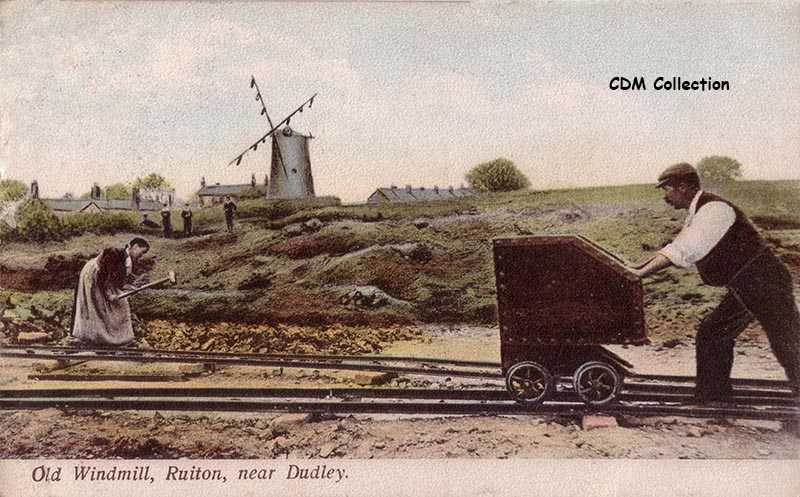
|

|
||
|
Landmarks ~
Churches ~
Pubs ~
Shops ~
Amenities ~
Dwellings ~
Events ~
Schools ~
Sports
Industrial ~ Transport ~ Folklore ~ Families
~ Gallery - Industrial ~
Quarrying
Hyde's Quarry, Upper Gornal.
David Hyde, Ruiton, quarrying took place south of
Hermit Street/Rock Street in the 'Cricket Meadow' area before the 1880s,
and then to The Holloway, the quarry appears to have been depleted by the 1950s.
The family also ran a successful haulage business and at one time were furniture removers, the company David Hyde Limited was wound up in 1959.
1899, August 28th.
Sale announcement of property including quarries at Ruiton, offered as a result of Messrs. D. & J. Hyde dissolving their partnership, included in the sale were several houses in Pale Street.
A Country wide Geological survey report of 1920 gives an account of the
Upper Gornal quarries, particularly that of David Hyde.
Mr. David Hyde, Pale Street, Upper Gornal.
Quarries: Cricket Meadow Quarry situated about 1/4 mile south-east of Ellowes Hall. Holloway Quarry, about 400 yards west of the above and adjacent to Ellowes Hall.
The rock is sandstone near the base of the Middle Coal Measures
and is known locally as 'Gornal Stone'. The quarry shows the
following sections:-
Overburden of sandstone rubble about 6ft. Sandstone, light-yellow, thick bedded 18-20ft 'Ganister'; a grey thin-bedded soft clayey sandstone seen to 3ft.
The rock is quarried in several lifts, and steam drills and explosives are employed.
The quarry yields several products, the overburden is ground under
edge-runners and sold to some of the firebrick makers.
The Sandstone itself is similarly ground for the production of 'cupola-sand' of two grades. Fine sand is sold as best white sand for use in gas-works, a small quantity of ground sandstone is sold for 'scouring sand', which is hawked about the neighbourhood. Large blocks of the stone are dressed for use a furnace hearths. The so called 'ganister' is ground for wall plastering, and some of it for lining furnaces At the Holloway quarry, the section is similar but shallower, the sandstone is somewhat yellower and the 'ganister' being inferior in quality is not worked.
The following extract comes from a 1903 book entitled 'The Black Country
and its industries' and describes Mr. Hyde and his activities.
DAVID HYDE
Quarry Proprietor, Haulier and Furniture Remover, Upper Gornal. Mr. David Hyde, as well as his father before him, has participated for a long time in the industry which the fame of Gornal stone and sand has raised to such a flourishing condition. Mr. Hyde shares the honour with others of developing this industry in the district, and owns some of the most important quarries in the place. He has good talent and taste for business and is engaged in other forms of business besides successfully accomplishing the work which the management of the quarries involves. He is a well-known haulier and furniture remover and keeps a number of horses and employs a separate staff of men for this purpose alone. Mr. Hyde supplies sand and stone for cupola and furnaces, and his quarries give a particularly rich yield in these materials of a high quality equal to any that can be found in other parts of the country. A large quantity of this sand is sent abroad, especially to America and France, and Mr. Hyde also supplies brick manufacturers in and around the district with sand for finer brick-making. His quarries are worked in a systematic manner with studied economy and careful selection of the stone and sand that are to be used for different purposes. In this way Mr.Hyde supplies his patrons with the most suitable materials, and all orders receive his personal attention. Being a keen business man he knows the advantage of being thoroughly efficient in every department and his horses are among the best that can be seen on the road. My Hyde leads a strenuous life and is never satisfied unless he succeeds in doing everything he undertakes in the most excellent possible way. ~
In 1951, Grainger & Worral, casting and pattern makers, moved from Clarence Street,
Upper Gornal to Hydes Quarry, Rock Street where they continued their expansion.
~
|
|







